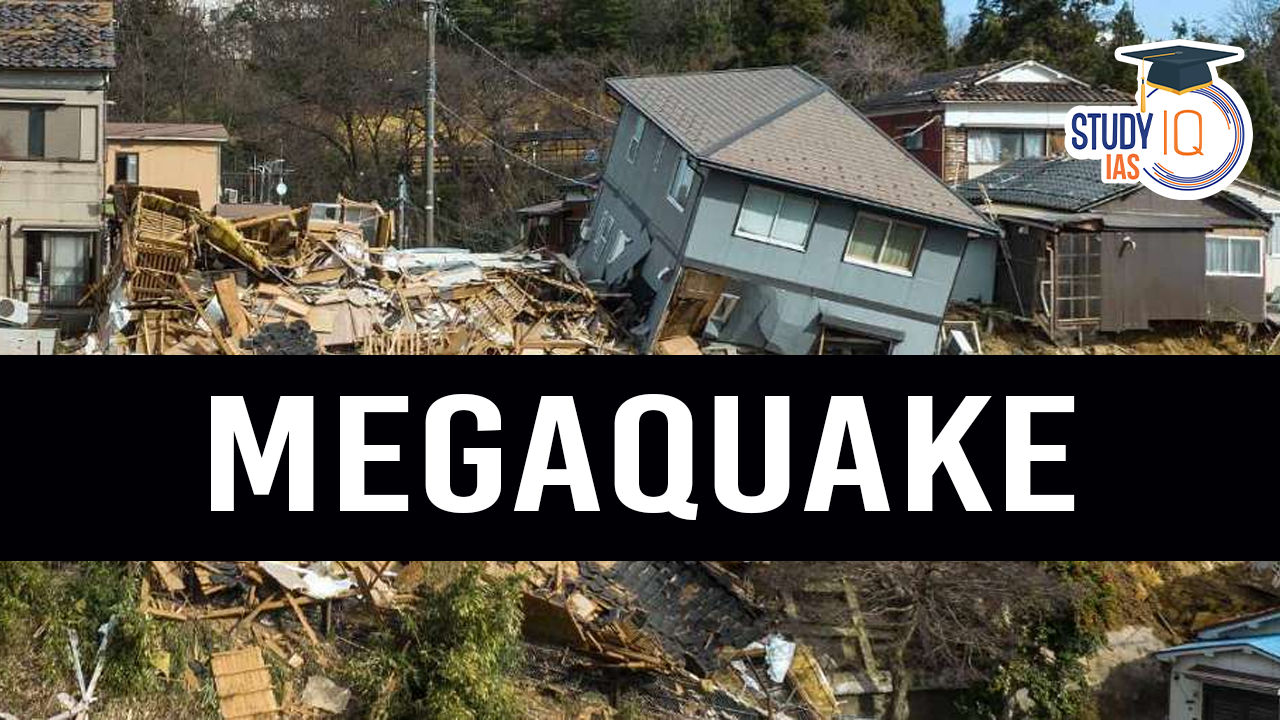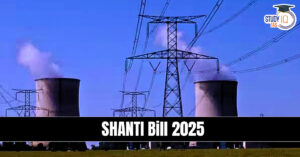Table of Contents
Probability of a Megaquake in Japan
- New Estimate: The Japanese government panel has updated the probability of a megaquake occurring within the next 30 years to 75-82%, slightly higher than the previous estimate of 74-81%.
- Reason for Concern: This adjustment reflects increased concerns about seismic activity in the region, emphasizing the need for preparedness and mitigation strategies.
About Megaquakes
- Definition: Earthquakes with a magnitude greater than 8.0 are classified as Megaquakes or megathrust earthquakes.
- Impact: These massive earthquakes can trigger tsunamis, cause widespread destruction, and result in significant loss of life and economic damage.
Mechanism of Megaquakes
- Tectonic Plate Movement:
- Earth’s crust is divided into large plates that float on the semi-fluid mantle beneath.
- In subduction zones, one tectonic plate moves beneath another, leading to the accumulation of stress and energy.
- Energy Accumulation and Release:
- Plates can become stuck, preventing smooth movement.
- The energy continues to build until the plates suddenly slip, releasing the pent-up energy and causing a massive earthquake.
Nankai Trough – The Epicenter of Concern
- Geographical Feature:
- The Nankai Trough is an 800-kilometer-long undersea trench running parallel to Japan’s Pacific coast.
- Tectonic Activity:
- It is the boundary where the Philippine Sea tectonic plate is subducting beneath the continental plate on which Japan is situated.
- This subduction zone is known for its potential to generate powerful megathrust earthquakes.
- Location Specifics:
- The trench extends from Shizuoka, near Tokyo, to the southern end of Kyushu Island.
- Subduction Zone Dynamics:
- Subduction zones are critical areas where tectonic plates collide, with one plate diving beneath the other.
- These zones are hotspots for seismic activity, often resulting in earthquakes and volcanic activity.
Implications
- Seismic Preparedness: With the probability of a megaquake increasing, it underscores the importance of Japan’s ongoing efforts in earthquake preparedness and disaster management.
- Infrastructure Resilience: Strengthening buildings, infrastructure, and community readiness can mitigate the impact of such catastrophic events.
- Public Awareness: Educating the public about earthquake safety measures is crucial for minimizing casualties and damage.
Ready to turn your UPSC dreams into reality? Join the trusted StudyIQ UPSC Foundation P2I Live Hinglish Batches today! Our expert-led courses are designed to build a solid foundation while keeping you updated with the latest exam trends. Contact us now to enroll and get one step closer to cracking the UPSC exam with confidence


 Future of Governance in Post-Maoist Indi...
Future of Governance in Post-Maoist Indi...
 Sabka Bima Sabki Raksha Amendment Bill 2...
Sabka Bima Sabki Raksha Amendment Bill 2...
 SHANTI Bill 2025: India Opens Nuclear Se...
SHANTI Bill 2025: India Opens Nuclear Se...

























